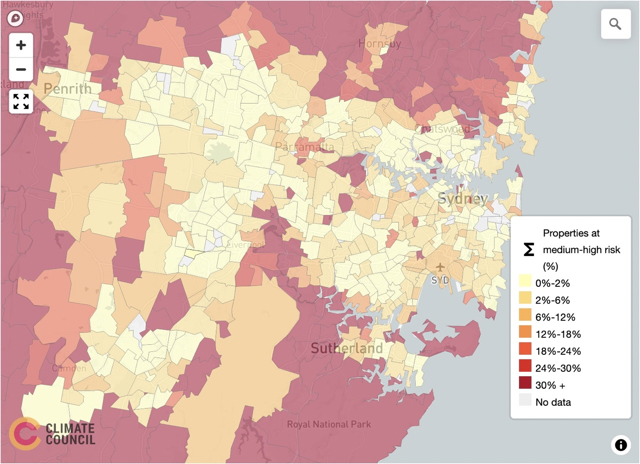The 2020 Black Summer bushfires were catastrophic and engulfed parts of the Australian southeast coast on an unprecedented scale. They caused extensive damage to properties, which led many survivors to seek help from their insurance companies with rebuilding.
“Bushfires are becoming more prevalent,” says insurance expert, Professor Michael Sherris from the School of Risk and Actuarial Studies at UNSW Business School. “With increased temperatures, this is something that is going to be more significant over coming years. We know that it is going to be hotter, drier, and bushfires will unfortunately become more common.”
Fire damage is normally included in home insurance but it’s important to know what you are covered for, and if your home insurance is up-to-date and reflects the cost of a new rebuild. “While most insurance companies should pay out, there are some issues and challenges that result in policyholders being underinsured or not insured at all,” says Prof. Sherris.
As Australians prepare for the upcoming bushfire season, what do policyholders need to know?
Does property adhere to newly revised building codes?
Building codes, which have been revised and updated following previous bushfires, can result in policyholders being underinsured.
Building codes are sets of regulations and standards established by local, state, or national authorities that specify the minimum requirements for the design, construction, and safety of buildings and structures.
Building codes can change over time to incorporate new safety standards related to fire resistance. Prof. Sherris says: “Building codes were revised after the black summer bushfire event and, depending on the risk level of the property, this impacts the cost of replacement.”
When homes do not comply with the new building codes, then an insurance company would only pay out to what your building structure was valued at. Insurance companies would not cover the cost of rebuilding your home to a standard that is compliant with the new building codes.
“If your home’s cladding material, for instance, does not meet the building code requirements in your area, and in the unfortunate event of a bushfire causing damage to your home, necessitating a rebuild with cladding material compliant with the building code, you will incur higher costs. Your insurance company, in this situation, will typically not cover the higher cost.
“It is the same if you renovate parts of your property to the new building codes. Your property is valued higher because it is more resilient to bushfires. Unless your insurance company is aware of this and reassesses your insurance premium based on your new building codes, you will be underinsured,” says Prof. Sherris.
What should policyholders do?
“Homes are being built to a much higher standard as a result of previous bushfires and homes being burnt down,” says Prof. Sherris.
Policyholders need to check what building codes their property needs to comply with, based on their specific geographic area. “If you live in a high bushfire risk area, then your building code may have changed since the black summer bushfires.
“Insurance companies may not notify policyholders of the changed building codes, but it’s good to discuss these points with insurance companies. Insurance companies should ensure that their policyholders are aware of the impact of building codes on insured values, and you may need to reassess your insurance premium to cover higher costs,” says Prof. Sherris.
“It may mean you might end up paying a higher price, but you will be covered for the upcoming bushfire season.”
Policyholders should be aware that there are some insurance policies that adjust for underinsurance by including a 30 per cent increase in price if a claim occurs, says Prof. Sherris. These policies are more expensive since policyholders will have higher cover that better reflects the cost of replacement.
Is home insurance becoming too expensive?
“A major challenge we see nowadays is Australians choosing not to have insurance because the cost may be considered too high,” says Prof. Sherris. “The current cost-of-living crisis is not helping.”
Insurance giants, QBE and Suncorp have both forecast home insurances to increase by 10 per cent to cover insurance claims as a result of the rising number of natural disasters.
All home insurance policies cover bushfire, and premiums reflect the bushfire risk for the property usually based on BAL (bushfire attack level). “As bushfires are becoming more prevalent, the BAL for properties is becoming higher, which results in higher home insurance costs. This is a factor that insurance companies use to assess home insurance.”
Climate Council shows high-risk areas within Sydney. Image: Climate Council
“It’s critical for homeowners to ensure they have home insurance that protects them from bushfire damage especially if they live in a high-risk area. Homeowners may think that their property will be undamaged but may not be aware of the expected outlook this upcoming season,” says Prof. Sherris.
The Australian Disaster Resilience Knowledge Hub stated that 2488 homes were burnt down in the 2020 Australia black summer bushfires and in the 2009 Victorian bushfires, there were more than 2000 homes lost. According to the 2023 AFAC seasonal outlook report, the upcoming bushfire season in NSW is expected to see an increased risk in fire compared to previous years.
“What we have seen in the US, for example, is that insurance companies have pulled out of providing insurance of areas where bushfire or other natural disaster risk is too high as it would be too large of a financial uncertainty to cover certain areas,” says Prof. Sherris.
“It’s a worrying factor that may also become prevalent in Australia. There is an unexpected void as to what will happen if insurance companies pull out of high-risk areas.”
Contact details:
For any related media enquiries, please contact: Katie Miller, News and Content Coordinator, UNSW Business School, [email protected] or by phone: +61 2 9385 4627 or 0434 156 155

